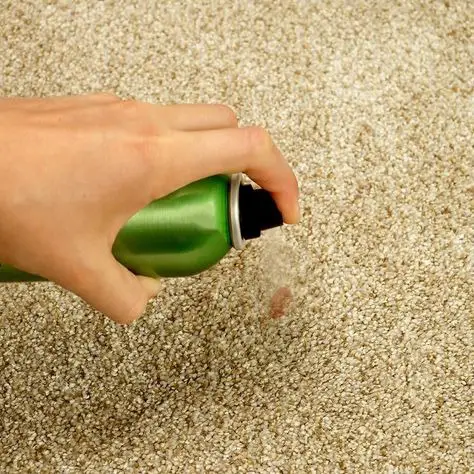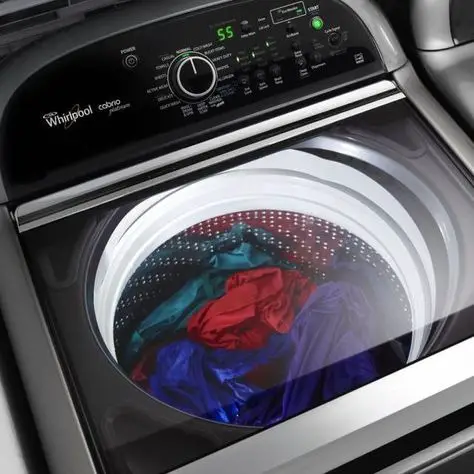
If you are into the latest beauty techniques, especially when it comes to nail care, this is for you. To attach nails, nail glue works incredibly well. Unfortunately, it has the same ability to adhere to other surfaces.
You may have noticed that “super glue” and “crazy glue” are used to describe nail glue. This cyanoacrylate can quickly attach to and bond to the surface. And when it properly connects to anything, it does so for good. One such surface that is commonly targeted by nail glue is clothing. So, how do you get nail glue out of your clothes?
Table of Contents
What Should You Do If Your Nail Glue Stains Your Clothes?
Despite your best efforts, accidents with nail adhesive may still occur. The first step is to let the glue dry if it has gotten on your clothing. When attempting to remove wet glue, it spreads and worsens the situation. Instead, you should let it dry before applying anything to it, depending on the type of fabric you’re working with.
We understand how worrying it can be when glue gets on fabric or clothing, but don’t be alarmed.
Although the majority of the tips make the removal process appear more difficult than it is, we have chosen to keep things simple. The following are steps to take when attempting to get nail glue out of clothes:
Step 1: Let the Glue Dry
It is much simpler to peel off the nail adhesive after it has dried. Once the glue has gotten on the cloth, don’t touch it! If you do, the glue will end up on other items or your hands. You also risk spreading it throughout the entire piece of clothing or fabric.
Furthermore, handling the glue in liquid form will not assist you in achieving your goal. Instead, wait for the glue to dry. This should take approximately twenty minutes. After drying, it should appear transparent and take on a firm shape.
Step 2: Scrub Off the Residue With a Soft Brush
After removing any extra glue, let it dry for a while before grabbing a brush with strong bristles. Also, the glue layer will be combed hard, making any loose pieces rise to the top.

If the fabric you are working with is delicate, like chiffon, lace, or silk, skip this step to avoid damaging the fibers. For the best results, use a toothbrush with hard bristles. Use a regular soft-bristled brush if you do not have access to a toothbrush.
To keep the fabric from getting damaged, don’t rub the glue with the toothbrush more than a dozen times.
Step 3: Patch Test a Part of the Fabric With Acetone

You may already be familiar with the powerful chemical acetone, which can quickly degrade nail polish. Strong chemicals, such as acetone, can occasionally bleach or stain fabric. As a result, it is advisable to experiment with acetone before using it. Locate a hidden section of cloth inside the garment to use as a test patch. After the acetone has dried for 30 minutes, inspect the area for any signs of discoloration.
Step 4: Use Acetone On the Stained Area
If there are no signs of discoloration, apply the acetone to the affected area after tapping a cotton ball over a sink to remove any drips. Wipe the area with a cotton ball to remove the glue from the stain. Once the hard lump of glue has been removed, continue rubbing the acetone over the stained area.

Make sure to replace the cotton bud and ball throughout the process. A single bud or cotton ball will not be able to absorb all of the dissolved glue effectively. Keep these precautions in mind:
- Considering that the acetone can only break down one layer of glue at a time, it may take some time.
- If the cotton ball begins to dry out, place it back in the acetone.
- You can use nail polish remover containing acetone if you don’t have pure acetone on hand. Using nail polish will not cause the previously mentioned discoloration.
- Additionally, we strongly recommend using a cotton bud when working with this chemical. Avoid handling chemicals with bare hands and avoid breathing them in.
Step 5: Rinse the Fabric to Get Rid of the Glue Residue

After getting all the glue off the surface, you would have to wash the cloth to get rid of the acetone or other stain remover. To get the acetone out of the fabric, hold the stained part of the garment under a running tap. This prevents the fabric from fading or discoloring. Squeeze the clothing to get rid of any excess water.
Step 6: Remove the Stain Completely With a Stain Remover
The following are stain removers that are effective for getting nail glue out of clothes.
1. White Vinegar:
White vinegar can get nail glue off your clothes because of its acidic characteristics. It is not, however, as efficient as acetone. This solution can be used to remove minor nail glue stains at home. Take the following steps:
- Fill a bowl with water and add some white vinegar.
- Grab a thin cloth and dip it into the concoction.
- Gently rub the substance into the affected area and leave it alone for a while.
- Once the glue has been loosened, gently scrape it away with the edge of a knife, a card, or even your fingernails.

2. Dish soap or Laundry Detergent:
Soap is another effective method for removing nail glue. It is suitable for use with colored clothing and will not discolor fabric because it has softer characteristics.

In addition to the soap, you should prepare some cold water. A laundry detergent addition will be beneficial for improved results. Here’s how to apply this technique:
- Place the damaged clothing in a sink of cold, soapy water.
- Soak them in water for a few minutes to soften the adhesive.
- Scrub the damaged area with an old toothbrush until the glue is gone.
3. Rubbing Alcohol:

Rubbing alcohol is effective in removing nail glue due to its active components. It can weaken the fabric’s adhesive, making it easier to remove the bond. Along with the rubbing alcohol, you’ll need cotton balls and paper towels. This process is simple.
- Soak the paper towel in a cup and a half of rubbing alcohol.
- Apply the paper towel to the troublesome area.
- Remove the paper towel after approximately thirty minutes and apply one cotton ball to the stain.
- If the cotton ball easily separates, you can cut off any residual glue with a knife.
4. Bleach:

Nail glue stains can be removed with bleach, a common cleaning solution. It can stain colored clothing due to its potent properties, so only white clothing is appropriate for this technique. For your colored clothing, use one of the other various options.
- 30 minutes or so of warm water soak time for the clothing
- Pour half a cup of bleach into your washer full of water.
- After washing, air dry the clothes.
- Check to confirm that the nail glue has been removed completely.
5. Salt Solution:

A salt solution can be used to dissolve difficult nail adhesives. Salt can help with cleaning, whether it’s table salt or coarsely powdered granules. Amazingly, it can also remove nail glue from the fabric. You can use this approach by following these steps:
- Combine salt and a small amount of water in a bowl.
- Place an old toothbrush in the solution.
- To get rid of the glue, scrub the affected area carefully with the toothbrush.
Step 6: Wash Fabric By Hand Or in a Washing Machine:

Set the washing machine to warm and add the clothing item. Add detergent or your regular washing powder, then set your washing machine to a gentle cycle or wash your clothing by hand if it is made of delicate fabric. If your clothing item is only intended for dry cleaning, take it to the dry cleaners to be washed.
Step 7: Hang Clothes to Dry
The final step is to dry the clothing. You should not put them in the dryer, though, as it can cause damage to the fabric. The stain’s remnants will be permanently etched into the cloth as a result. Instead, hang the item of clothing somewhere where it will get plenty of fresh air.

Check for glue remnants once the clothes have dried. If you discover glue residue on the surface, repeat the removal process. Use a lot more nail polish remover or acetone this time and do everything exactly as the directions say.
Important Considerations to Keep In Mind Before Attempting to Remove Glue from Clothes
Before you try to get glue out of clothes, there are some important things to think about. These tips will help you avoid damaging your clothing while attempting to remove the nail glue.
Always Wear Safety Gloves and Masks When Using Strong Chemicals
When working with hazardous chemicals, it is best to wear protective gloves. Your skin will be protected from almost all of the negative effects that cleaning products may have. You can use any type of cleaning glove. Just keep in mind that the thicker, the better.
Avoid Wiping Away Wet Glue Stains with Your Hands
You will have a more difficult time completely removing the glue if you wipe on it in a bid to clean it. The nail glue can stain your hands in addition to spreading it on your clothing and penetrating the fibers of your clothes more deeply. Dry glue can be easily removed. Scrape them off your clothes with a knife or your fingernails.
Scrub as Gently as Possible While Trying to Get Stains Out of Clothes
Make sure to rub or clean the nail glue off of your clothes with a light touch. Intense force simply destroys the fabrics and if the fibers become weaker, they are more likely to tear. Also, don’t pull too hard on the glue, because that could cause it to crack and stretch the cloth.
Always Wash the Clothes After Applying Stain Removers
Remember to give the clothing a thorough wash, regardless of the method you use. With washing, you can remove any remaining nail adhesive. Furthermore, washing can get rid of odors and leftovers from household items.
Frequently Asked Questions
1. Can I Remove Nail Glue from My Clothes With an Iron?
Yes. Melting the glue with an iron can be helpful if you don’t have much time on your hands. The heat can only dissolve the adhesive that is on the surface of the fabric; it cannot penetrate the fabric itself. You can employ other techniques to entirely eliminate them.
2. What Else Can I Use in Place of Acetone?
If acetone cannot be used to clean the fabric, soak it in cold, soapy water. Allow it to soak for about 30 minutes before removing it and laying the clothing flat on a surface. After removing the nail adhesive with a clean, gentle toothbrush, continue with your regular washing routine.
3. Can WD-40 be Used to Remove Nail Glue?
Yes. Directly apply WD-40 to the areas that are stained with glue, then wait between five and ten minutes for it to take effect. After a while, you should be able to quickly wipe it away with a clean microfiber cloth.
Final Words
Your favorite piece of clothing could be saved if you learn how to remove nail polish from clothing. It is not necessary to purchase pricey stain removers in order to get the nail glue off because there are multiple inexpensive household items that can assist with the stain removal process.
Follow the instructions above and see what you have in your home and if you have any questions, please leave them in the comments section below.